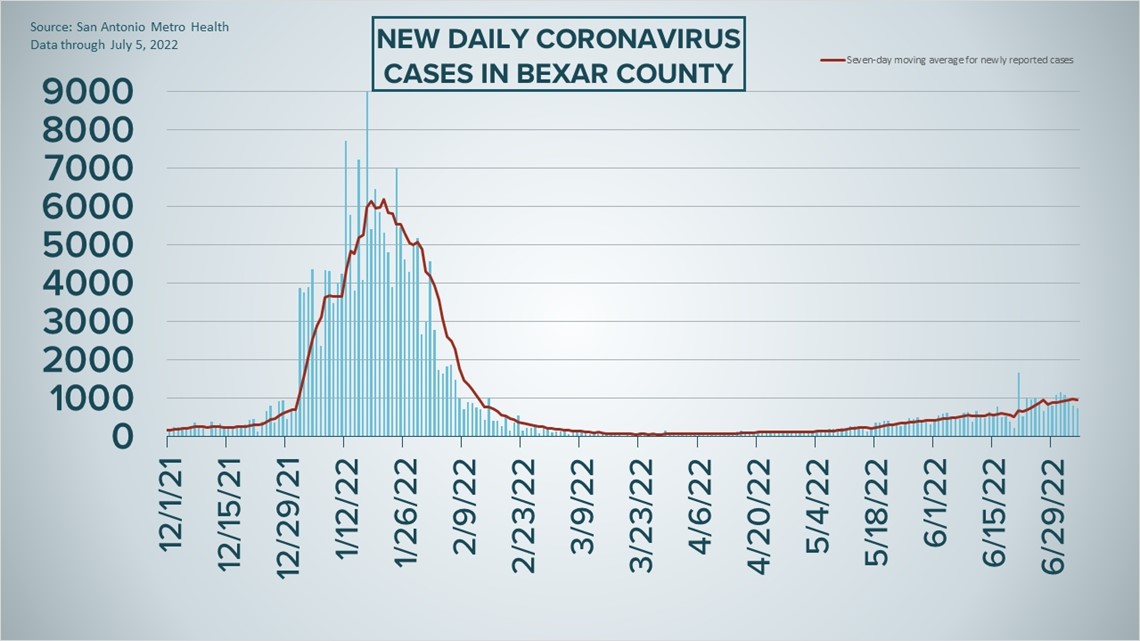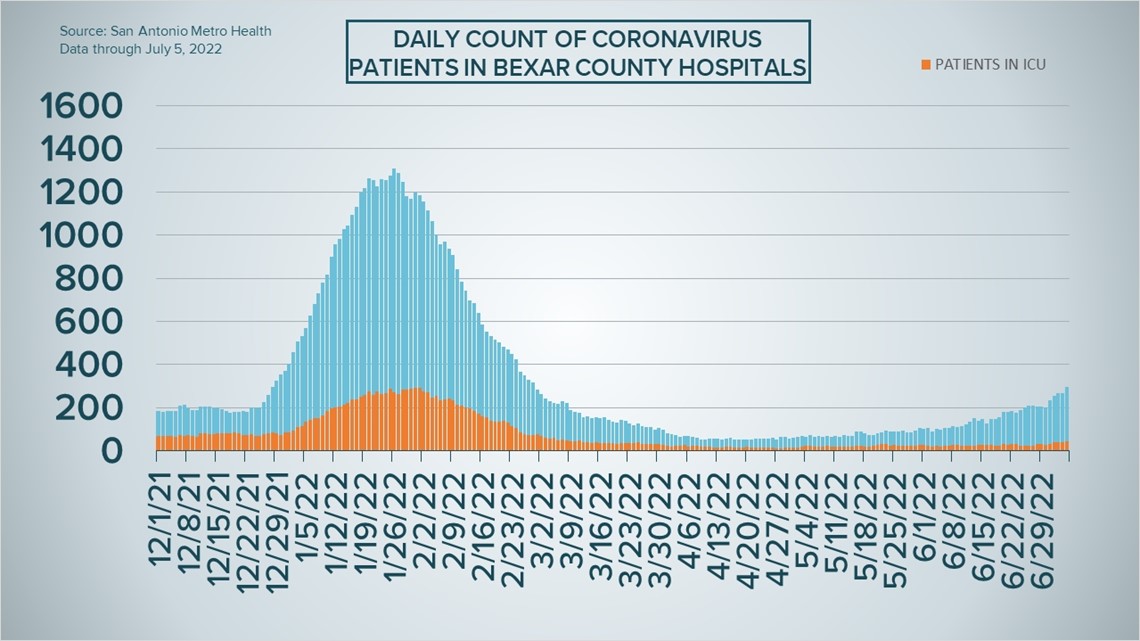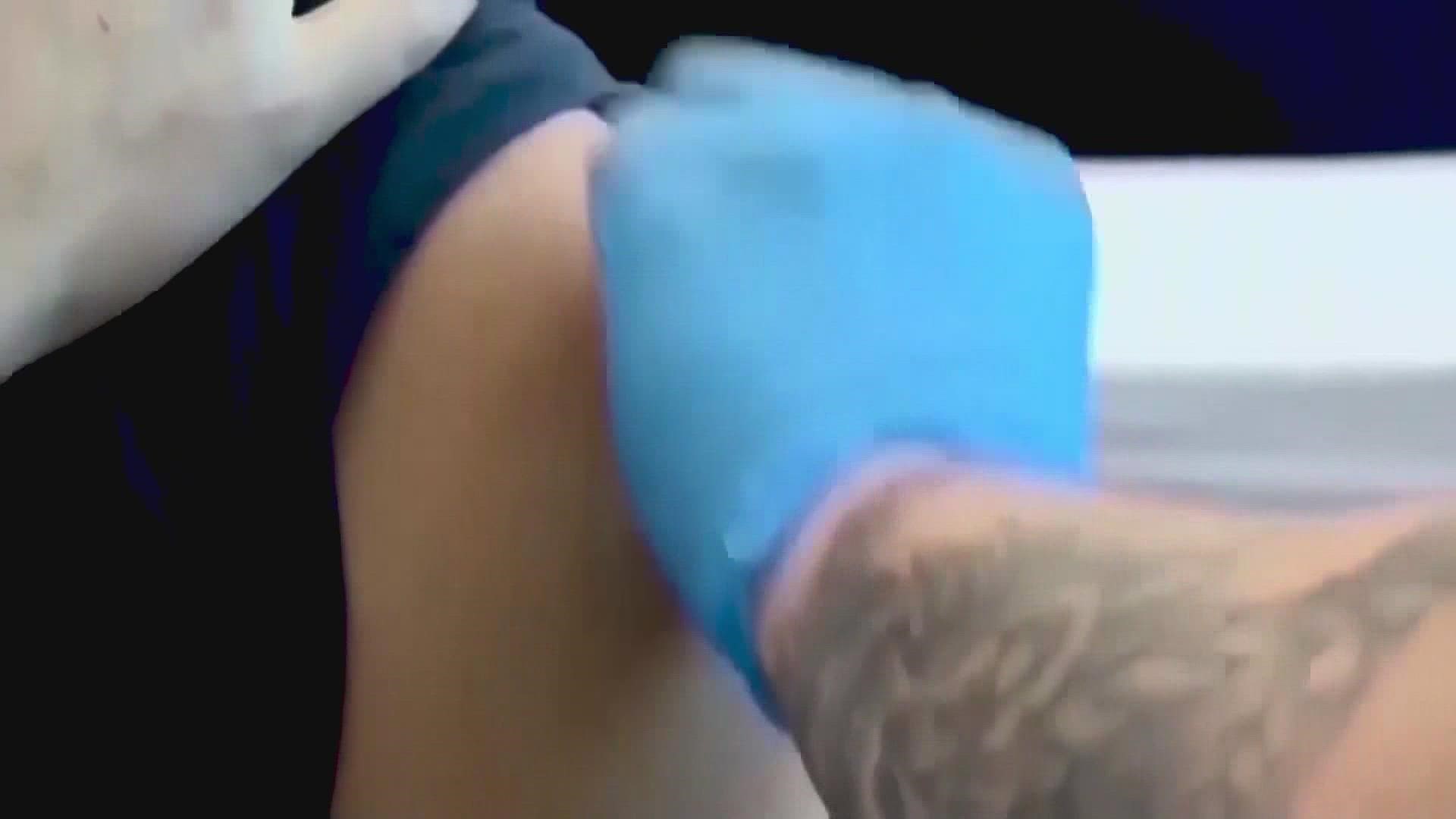SAN ANTONIO — While COVID-19 hospitalizations have steadily risen in the San Antonio area since late April, the rate of that escalation quickened over the extended holiday weekend.
On Tuesday, there were 294 patients receiving treatment for coronavirus symptoms in local hospitals, according to health authorities, amounting to a 30% jump from last Tuesday and a 67% increase over this time last month. By comparison, the seven-day stretch from June 21 to June 27 saw hospitalizations go up by 14%.
Of those 294 hospitalizations – the highest for Bexar County since Feb. 28 – 11 patients are using ventilators and 43 are in intensive care.
Virus-related deaths, however, remain low, and 3,591 new infections have been reported since Friday, compared to 3,917 for the four-day stretch preceding last Friday. That total includes 735 new cases tallied on Tuesday, the lowest single-day count since June 27.
The seven-day case average stands at 949, which is down from Monday. That figure, however, has also been gradually increasing for the last two-plus months.
More than 576,000 COVID-19 diagnoses have been reported in Bexar County, while 5,340 residents have died of virus complications.
How Bexar County is trending




Vaccine Progress in Bexar County
The following numbers are provided by San Antonio Metro Health. A full breakdown can be found here.
- 1.457 million eligible Bexar County residents are fully vaccinated as of Monday, June 27.
- More than 555,000 eligible Bexar County residents have received a COVID-19 booster shot, including 80,304 residents who are fully boosted, as of Monday, June 27.
The CDC states that "when a high percentage of the community is immune to a disease (through vaccination and/or prior illness)," that community will have reached herd immunity, "making the spread of this disease from person to person unlikely."
The City of San Antonio breaks down the vaccination rates by zip code on Metro Health's Vaccination Statistics page.
Coronavirus in Texas
The total number of coronavirus cases in the state since the pandemic began grew by 7,791 on Tuesday, according to the Texas Department of State Health Services. That total includes 5,586 new confirmed cases and 2,205 new probable cases. More details can be found on this page.
Tuesday's figures bring the total number of Texans diagnosed with COVID-19 to more than 7.1 million.
An additional three Texans have died from virus complications, meanwhile, raising the statewide death toll to 87,178.
Coronavirus symptoms
The symptoms of coronavirus can be similar to the flu or a bad cold. Symptoms include fever or chills, cough, shortness of breath or difficulty breathing, fatigue, muscle or body aches, headache, new loss of taste or smell sore throat, congestion or runny nose, nausea or vomiting, and diarrhea, according to the Centers for Disease Control.
Most healthy people will have mild symptoms. A study of more than 72,000 patients by the Centers for Disease Control in China showed 80 percent of the cases there were mild.
But infections can cause pneumonia, severe acute respiratory syndrome, kidney failure, and even death, according to the World Health Organization. Older people with underlying health conditions are most at risk.
Experts determined there was consistent evidence these conditions increase a person's risk, regardless of age:
- Chronic kidney disease
- COPD (chronic obstructive pulmonary disease)
- Obesity (BMI of 30 or higher)
- Immunocompromised state (weakened immune system) from solid organ transplant
- Serious heart conditions, such as heart failure, coronary artery disease, or cardiomyopathies
- Sickle cell disease
- Type 2 diabetes
- The CDC believes symptoms may appear anywhere from two to 14 days after being exposed.
Human coronaviruses are usually spread...
- Between people who are in close contact with one another (within about 6 feet).
- Through respiratory droplets produced when an infected person coughs, sneezes or talks. These droplets can land in the mouths or noses of people who are nearby or possibly be inhaled into the lungs.
- Some recent studies have suggested that COVID-19 may be spread by people who are not showing symptoms.
Help stop the spread of coronavirus
- Stay home when you are sick.
- Eat and sleep separately from your family members
- Use different utensils and dishes
- Cover your cough or sneeze with your arm, not your hand.
- If you use a tissue, throw it in the trash.
Find a Testing Location
City officials recommend getting a COVID-19 test if you experience fever or chills, cough, shortness of breath or difficulty breathing, fatigue, muscle or body aches, headache, new loss of taste or smell, sore throat, congestion or runny nose, nausea or vomiting, or diarrhea.
Here's a Testing Sites Locator to help you find the testing location closest to you in San Antonio.
Latest Coronavirus Headlines
- For now, wary US treads water with transformed COVID-19
- After two pandemic years, prepare for summer travel chaos
- Coronavirus Tracker: Risk level upped to 'high' as Bexar County hospitalizations rise
- Holiday travel begins, pushing US airport traffic to pandemic high
- North Korea suggests balloons flown from South brought COVID-19
- Supreme Court rejects COVID-19 vaccine mandate case from New York
- COVID boosters for the fall must target newer omicron types, FDA says
- COVID-19 hospitalizations have doubled in San Antonio over the last month, doctors blame subvariants
- COVID-19 vaccines saved nearly 20 million lives worldwide, scientists say

